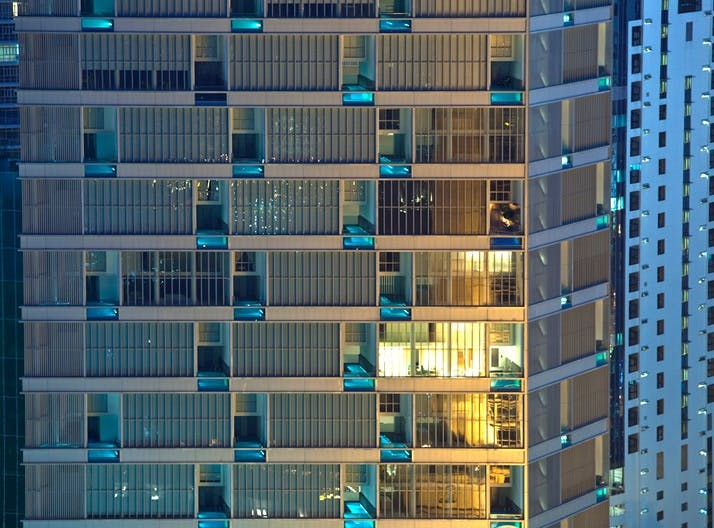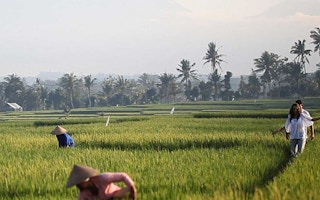As green buildings gain popularity worldwide, architects and building owners keeping a close eye on the energy use and carbon footprint of their buildings will do well to remember that their creations should also “be beautiful and move the human spirit”.
Addressing the audience at the second day of the International Green Building Conference, principal architect Chan Soo Khian of local firm SCDA Architects emphasised that not only should buildings have a minimum impact on the environment, they must also take into account factors such as the lifestyle of their inhabitants, and local cultural and religious practices in the surrounding areas.
In all of SCDA’s projects, which range from public housing in Singapore to luxury apartments in Kuala Lumpur to five-star resorts in the Maldives and Bali, the firm takes pains to balance sustainability with the comfort and well-being of residents, he said.
At SkyTerraces@Dawson, a public housing project in Singapore for instance, SCDA designed a unique flat structure which couples a standard unit with an adjoining studio apartment so that young couples with children can live with their elderly parents without compromising on privacy.
In such a set-up, working adults can easily seek their parent’s help to look after their children, and also care for them as they age. Such housing options help bring families together, and also reduce the need for transport as couples can avoid having to shuttle between the two addresses on a regular basis.
“It’s about thinking how people live,” explained Chan. The project also has a slew of green features including rooftop gardens, leafy walkways, solar panels, and rainwater collection ponds.
Reflecting on the importance that buildings should be both beautiful and sustainable, Chan noted that environmental protection was fast becoming the “new baseline” in architecture, and many project tenders already require proposals to address this issue.
“But let us not forget that there is a human aspect,” he said. “Buildings must add magic to our lives and lift our spirits while fulfilling our environmental responsibility”.
In another example, Chan explained how he integrated private pools into apartment units at a condominium in central Kuala Lumpur, Malaysia.
The open space created in each apartment for the pool allows ventilation to flow through the building, which creates a wind tunnel of sorts, he explained. These drafts of cool air are a low-energy way to keep residents comfortable, he added.

One KL in Kuala Lumpur, Malaysia. Pools cut into the side of each apartment improve natural ventilation in the homes. Image: OneKL
Respecting the cultural and religious practices of a building’s surroundings can also help architects deliver a beautiful and sustainable project, shared Chan.
“
Buildings must add magic to our lives and lift our spirits while fulfilling our environmental responsibility.
Chan Soo Khian, principal, SCDA Architects
An example of a project where cultural sensitivity paid off was the Alila Villas Soori in Bali, which Chan owns and designed. The resort is developed on land which locals use for rice padi cultivation. Since this type of agriculture relies on a very specific irrigation practice known as ‘Subak’, the resort had to be constructed in a way that did not damage the water channels needed for this.
Existing routes for religious processions needed to be left untouched, and several new temples also had to be built on the site in accordance with their beliefs. Chan noted that the team built around all the paths used by locals so that they could continue their religious and agricultural practices on the resort grounds. The result was a hotel that offers an authentic experience to visitors.
In a bid to blend in with its surroundings, the resort also made extensive use of sustainable construction resources such as terracotta tiles from surrounding villages, volcanic rock from local quarries, and also created non air-conditioned public spaces.
Green buildings, healthier employees
Speaking at the event on a separate topic but similarly dwelling on the human aspect, John Mandyck, chief sustainability officer at building systems manufacturer UTC Building & Industrial Systems, a unit of United Technologies Corp, noted that pursuing sustainability in office buildings could also significantly improve employee health and productivity.
He shared a pilot study carried out by UTC Building & Industrial Systems in conjunction with Harvard University, research institute Syracuse Centre of Excellence and the Upstate Medical University, where researchers exposed participants to different levels of indoor air quality and then tested their cognitive abilities.
While the results of this study are embargoed till the end of September, Mandyck noted that the findings “can change everything” when it comes to green buildings.
If a link between indoor air quality and health was conclusively established, sustainable buildings could “become competitive, strategic assets for companies”, he said.
Eco-Business is producing a special e-newsletter featuring stories on the proceedings at IGBC 2015, kindly supported by City Developments Ltd and the Building and Construction Authority. Sign up to receive the newsletter here.






















